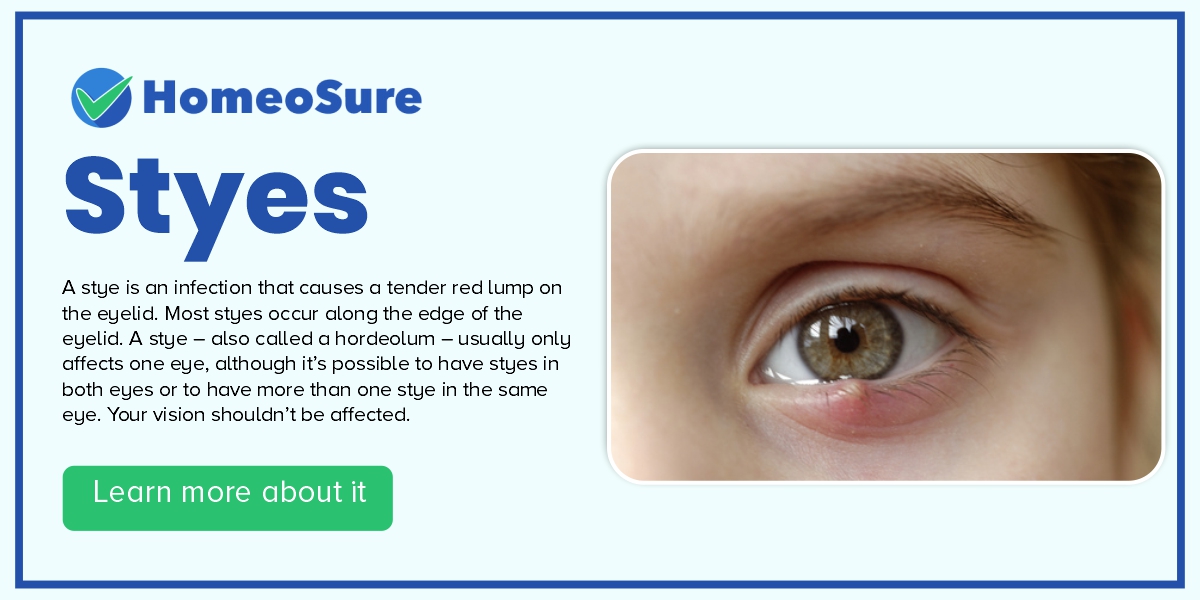Styes
A stye is an infection that causes a tender red lump on the eyelid. Most styes occur along the edge of the eyelid. When a stye occurs inside the eyelid, it is called an internal hordeolum. A stye – also called a hordeolum – usually only affects one eye, although it’s possible to have styes in both eyes or to have more than one stye in the same eye. Your vision shouldn’t be affected.
There are two types of stye: They are:
- External stye (external hordeolum): a swelling that develops along the edge of your eyelid; it may turn into a yellow pus-filled spot that is painful to touch
- Internal stye (internal hordeolum): a swelling that develops on the inside of your eyelid; it’s usually more painful than an external stye
CAUSES OF STYES
- Styes are usually caused by an infection with staphylococcus bacteria (staphylococcal infection)
- Long-term blepharitis (inflammation of the eyelids) may also increase the risk of developing a stye
- Styes are fairly common and you may have at least one or two during your lifetime
SYMPTOMS OF STYES
- Small pea-sized lump on the top or bottom of eyelid
- Localized pain and swelling of eyelid
- Redness and burning in eyes
- Itching and irritation in eyes
- Untreated Styes, can lead to complications such as:
- Chalazion (Styes on inside of eyelid)
- Periorbital cellulitis (Infection of skin around the eyes)
HOMEOPATHIC TREATMENT
Homeopathy has more than 50 preventive and curative medicines for Stye that work very well in children and adults. Every remedy is carefully prescribed on the basis of the patient’s history and the correct homeopathic medicine can even prevent spread of infection to the second eye. Homeopathy offers a more holistic approach in treatment for Stye than any other system of therapy.
Homeopathic treatment is targeted towards UPROOTING THE DISEASE and ensuring health with no side effects. For prescribing to an individual, a PLAN OF TREATMENT is followed which involves:
- GETTING THOROUGH UNDERSTANDING OF CASE which includes complete case taking (analyzing patient as an individual) along with patient history and family history
- DIAGNOSIS OF PATIENT AND DISEASE
- INDIVIDUAL ASSESSMENT OF THE CASE
- PRESCRIBING THE MOST SUITABLE INDIVIDUAL CONSTITUTIONAL REMEDY
